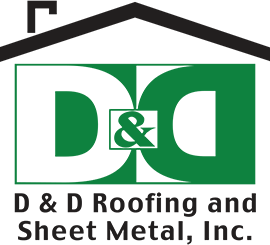In a previous post, we discussed the signs that you need better roof ventilation. Here, we’ll take a look at different types of roof vents, ventilation methods, and the most common vent options available for each method.
The list includes exhaust and common intake vents. The most common types of roof vents include:
Ridge Vents
A ridge is the roof’s peak where two roof areas meet. Since most roofs feature ridges, it’s no surprise that ridge vents are the most popular type of exhaust vent. These vents can run the length of the ridge, which means they can release the greatest volume of hot indoor air versus other passive exhaust vents.
Off Ridge Vents
Off-ridge vents are installed just below the crest of the roof and therefore don’t do as well a job as ridge vents in letting hot air escape. This is why off-ridge vents are best installed on roofs that don’t have long ridge lines.
Box Vents
Also known as louver vents, box vents are square-shaped and are installed in multiples across a roof for greater effectiveness. Due to their small size, box vents release less air than ridge vents, but they can be installed strategically. That is, they can be installed in areas with complex roof structures, as well as in small areas where ridge or off ridge vents can’t be installed.
Roof Turbines
Roof turbines look like rotating chef’s hats. The bulb-shaped cowl spins when its fins catch the wind. When the wind reaches 5 to 6 miles per hour, the fan inside the cowl also spins, pulling air up and out of the building. Keep in mind that roof turbines only work when there’s wind, so installing these in wind-poor areas is ill-advised.
Hard-Wired and Solar-Powered Attic Vents
These are machines that use motorized fans to suck hot and stale air from beneath the ceiling. Hard-wired vents have been marketed as a means to cool down the home so as to help reduce air conditioning costs, but a study showed that the reduction in the energy consumed by a home’s AC system was smaller than the energy consumed by the vents’ fans.
Furthermore, it is difficult to set their power level appropriately. If they’re too weak, then they won’t make any difference in terms of cooling. However, if they’re too strong and you’re using air conditioning to cool down your house, then the motorized fans may pull out cool air and make your AC work unnecessarily harder.
Solar-powered fans were designed to solve the energy cost conundrum, but they still suffer from the same power level issues as hard-wired vents. Additionally, motorized fans, regardless if they were hard-wired or solar-powered, are noisy. For all of these reasons, low-tech exhaust vent options are often deemed better than these high-tech ones.
Whether vertical ventilation is active or passive, exhaust vents need to have sufficient intake vents to work optimally. Here are the most popular intake vent types:
Soffit Vents
Found at the bottom of a roof’s eaves, soffit vents either run the length of the roof’s edges or are spaced 5–6 feet apart from each other. Most roofs feature overhangs, which makes soffit vents the most common among intake vent types. Their simplicity, affordability, and effectiveness at facilitating convection also contribute to their popularity.
Fascia Vents and Drip Edge Vents
Also called over-fascia vents because they are installed on top of the roof’s fascia boards, fascia vents feature holes on their side edges to let air into the roof. Drip edge vents, on the other hand, are built and installed like regular drip edges, except that these feature holes that also let air into the roof.
Fascia and drip edge vents are good alternatives to soffit vents for places along the roof’s perimeter that have little to no overhangs.
Gable Vents
Installed on opposing house walls instead of on the top and bottom parts of a roof, gable vents facilitate horizontal or cross-ventilation. Gable vents are only appropriate for gable roofs because other types of roofs may have beams and other objects that would impede air from moving across the roof.
What are The Roof Ventilation Methods?
There are three main ways to ventilate your roof: passive vertical ventilation, active vertical ventilation, and passive horizontal ventilation.
A passive vertical ventilation system has no moving parts and simply lets air move on its own via the process of convection. Hot air rises and escapes from the exhaust vents found on or by the topmost parts of your roof, thereby lowering the air pressure inside the home. Since air moves from areas with higher pressure to areas with lower pressure, cooler and fresher air from outside enters the home via intake vents on the lower parts of the roof.
When compared to the other methods, passive vertical ventilation is the most reliable and the easiest to maintain since it only requires proper construction to work. Additionally, most roofs can be easily and inexpensively modified to accommodate this type of ventilation. All of these make this ventilation method the most popular of them all.
Unlike passive vertical ventilation, active vertical ventilation uses wind- or electricity-powered rooftop exhaust vents to pull air out of the house.
Passive horizontal ventilation, on the other hand, relies on the wind to blow cool air into vents on one side of the home and push out hot air via vents on the other side. Also known as cross ventilation, this method uses vents that can let air in or out so that they’ll still work if the wind blows in the opposite direction.
Vertical and horizontal ventilation cannot be utilized in the same structure because airflow from one method disrupts the flow of the other.
There are three main ways to ventilate your roof: passive vertical ventilation, active vertical ventilation, and passive horizontal ventilation.
To have the best ventilation for your roof, turn to D&D Roofing. Let our roof experts determine the roofing solution that fits your needs, your taste, and your budget. Contact us today to learn more.


